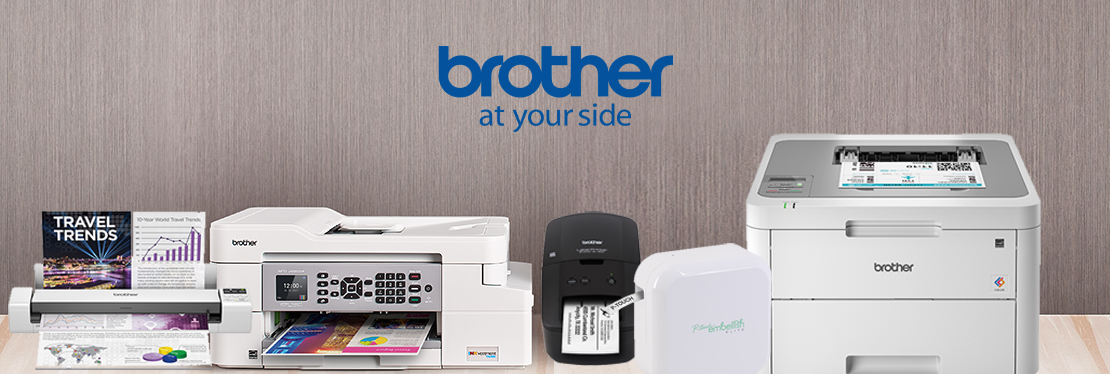This profile has been claimed by the business owner or representative.
Imagecenter ADS-3000N-US Document Scanner, Black
About this business
Does a good job. I have never had a scanner such as this and now I'm glad I have it. I am not someone who has ever seen the need to spend a lot of money on a scanner so I have don't have one to compare this one to. I can give you the simple household only user review. I was impressed with how heavy this thing is right off the bet. My first impression was was that this was well made piece of equipment that wasn't going to fall apart when I put it to work. I am thrilled that it does double sided as it speeds up the time scanni... read more
Excellent and super fast document scanner that can work without a computer. The media could not be loaded. Video review to follow soon. This scanner might finally be the one to best my beloved Fujitsu ix500 due to how less draconian it is for working with multiple network users. In fact it doesn't even need a PC to operate, and I suggest not even installing the PC based software unless you need some of its included OCR software. The three buttons on the front can be configured via the scanner's internal web server to send do... read more
Excellent and super fast document scanner that can work without a computer. Video review to follow soon. This scanner might finally be the one to best my beloved Fujitsu ix500 due to how less draconian it is for working with multiple network users. In fact it doesn't even need a PC to operate, and I suggest not even installing the PC based software unless you need some of its included OCR software. The three buttons on the front can be configured via the scanner's internal web server to send documents to specific network loc... read more
Lightening fast and super easy to set up and use I thought my Mom's scanner -- A Fujitsu ScanSnap -- was lightening fast at 25 PPS, but this one is twice as fast. And the quality of the scans even at 50 pages per second is great. The only downside is the weight - this baby is heavy. If you need this much speed for a lot of heavy duty scanning, this is a great, attractive choice that will do what you need to and is easy to use. If you're looking at a scanner for a home office and are not going to have someone dedicated to doi... read more
Scan to a server/network share/ftp with a single button press! This long review, so the short version is that I really like it. If three network locations is enough, this is a great small office device. Rather than having a scanning computer or having a Snapscan on every computer, you can walk up and scan to three network location (without interacting with a computer at all). It's so much faster that the multi-function printer (mfp) in most small offices. You put stuff in it, press one of three buttons, and off it goes! On w... read more
Very, Very Nice. But Not Sure the Networking Capability & Increased Daily Duty Cycle is Worth the Increased Cost.... I have (and have extensively used) both theBrother ImageCenter ADS-2000 High Speed Document Scanner, Blackand theBrother High Speed Desktop Document Scanner (ImageCenter ADS-2000e). I love these scanners: they're super speedy (Brother states they scan at 24 pages per minute), the included software allows for a great amount of flexibility, and the footprint when folded up makes them somewhat portable. This ADS-... read more
Comparison with the Fujitsu ScanSnap IX500 I did a comparison with the Fujitsu ScanSnap IX500 since I have both units. They are both roughly the same size, with the ScanSnap being slightly smaller. Their specs are similar, except that the Brother scanner has double the speed - 50 PPM vs. 25 PPM. The Brother is also a true network scanner, while the ScanSnap is not. The ScanSnap is a true wireless scanner, while the Brother is not. Set up for both was quite simple, though I had a hard time getting it to talk through the netwo... read more
Incredibly fast and efficient I was pleasantly surprised at how compact this machine is; it fits reasonably into our home office. It connects to your wireless network so you can print from your smartphone or tablet, and setup was quick and simple. Unlike scanners that scan one side of the paper, feed it back and then scan the second side, this machine scans both sides of the document in one trip through, making it incredibly fast and efficient. You can scan a LOT of material in a short amount of time with this, which was exa... read more
Incredibly fast and efficient I was pleasantly surprised at how compact this machine is; it fits reasonably into our home office. It connects to your wireless network so you can print from your smartphone or tablet, and setup was quick and simple. Unlike scanners that scan one side of the paper, feed it back and then scan the second side, this machine scans both sides of the document in one trip through, making it incredibly fast and efficient. You can scan a LOT of material in a short amount of time with this, which was exa... read more
Frequently asked questions about Imagecenter ADS-3000N-US Document Scanner, Black
How is Imagecenter ADS-3000N-US Document Scanner, Black rated?
Imagecenter ADS-3000N-US Document Scanner, Black has a 4 star rating with 38 reviews.
When is Imagecenter ADS-3000N-US Document Scanner, Black open?
Imagecenter ADS-3000N-US Document Scanner, Black is open now. It will close at 6:00 p.m.
